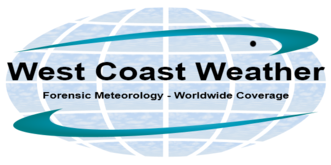Hazard of ice crystals
By Michael FaginIcing on WingsWith 0 commentsClouds at temperatures between 0 and -40C contain a mixture of ice crystals and super-cooled water. At colder temperatures, ice crystals prevail. Super-cooled water is responsible for the threat of aircraft structural icing, but at lower temperatures, this threat decreases. Because of the lack of super-cooled water, icing, other that of light intensity, is unlikely at temperatures colder than about -20C. Because of the decrease in the threat of aircraft structural icing at these cold temperatures ice crystals were generally not seen as an aviation hazard. In the past several years, however, research has revealed that in the tropics thunderstorms develop differently from those in mid-latitudes. Weak updrafts in the tropics suppress the formation of hail, resulting in a dense canopy of ice crystals in the anvils of thunderstorms. These thunderstorms tops often grow and merge resulting in a thick presence of ice crystals in cirroform clouds, even in areas between thunderstorms. These clouds persist for a time after thunderstorm decay. Because of the lack of liquid water, these clouds are characterized by low radar reflectivity. In recent years, this high concentration of ice crystals that occurs mainly in the tropics has been shown to be a potential hazard to aviation. There have been incidents where ingestion of ice crystals has affected the performance of aircraft systems including the pitot system and engine.
I want to thank Dr. Mike Witiw of our staff for the article.
